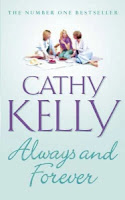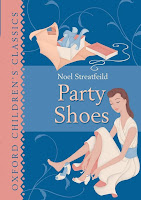 |
| (Amazon UK link) |
The prologue introduces a woman from California called Leah who has decided to buy a large, run-down house which has been unsaleable for a while. The estate agent thinks she’s crazy, but she’s evidently quite wealthy, and sure it’s the right place to start her centre for wellness and healing.
The action then moves to January, a year and a half later. And we met Mel, in the ladies’ room at her prestigious office, rapidly changing her laddered tights prior to an important meeting. Mel, we quickly learn, is a mother of two young daughters whom she loves. But she also works full-time in a high-powered job where she’s expected to put her career first. Mostly this works - her mother loves looking after her grandchildren, and they go to an excellent nursery. But Mel wants to be around for milestones, and doctor’s appointments, and feels that her boss - a woman, and a mother herself - is unfeeling.
Then just as I was beginning to feel as if I quite liked Mel, a new chapter starts, with another new character. Cleo has just finished a hotel management course and has lots of ideas for renovating and refreshing her parents’ traditional hotel. It has been successful for many years, but it’s looking tired, and while it still attracts some loyal clients, more people are looking for more modern accommodation. Cleo’s two brothers seem only to care about money, and her parents are looking tired. But they don’t seem to have any respect for her at all.
I found Cleo a bit annoying, entirely lacking in tact, and wasn’t surprised that nobody seems to listen to her. And then after a lengthy chapter with Cleo and her family at loggerheads, yet another new person appears: Daisy, who lives with the love of her life Alex, and really wants to have a baby. They’ve been trying for a while and she’s decided they need to visit a fertility clinic. Alex isn’t happy about this, but Daisy is becoming a bit obsessed with the idea so he agrees, reluctantly, to go with her to the first meeting.
The book continues, alternating viewpoints, and it took me until at least half way through to remember who was whom, and who their friends/partners/family members were. I was somewhat interested in the different subplots, although there is rather too much introspection for my tastes, but none of the people feel really three-dimensional or believable. Inevitably each of them meets Leah and spends some time at her healing centre trying different treatments; Leah has her own stresses of the past, but appears to be a superwoman, extremely wise and able to help everyone to overcome traumas and become more positive.
I did keep reading, although I skipped a few pages here and there when we were taken into flashbacks of one character meeting another in the past; it didn’t seem to matter at all. I had to look back, a few times, to remind myself who was whom, and although eventually I could remember the main characters, I regularly forgot minor ones. It’s not heavy reading, but my eyes started glazing over if I read more than a chapter at a time. Nothing much happened other than a great deal of discussion and navel-gazing. Then they visit the healing centre and everything looks much brighter.
‘Always and Forever’ was first published in 2005 and is one of the author’s earlier books, so perhaps that’s the reason I found it less appealing than the later books of hers that I’ve read. It’s not that it’s a bad book, and it ends reasonably positively, but it didn’t do anything for me. It would have been better with some significant editing, in my view. I doubt if I’ll read this one again.






